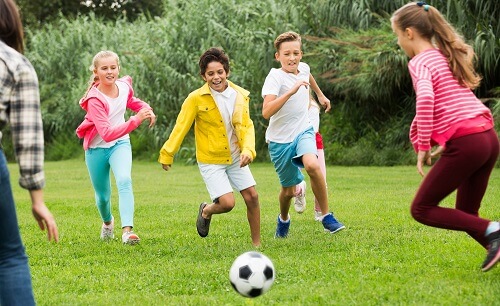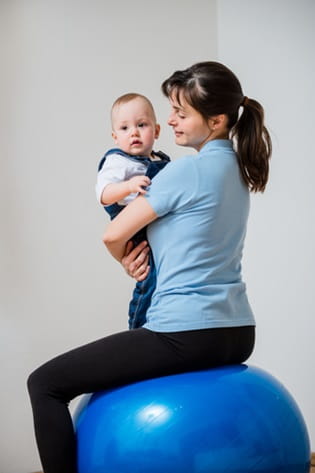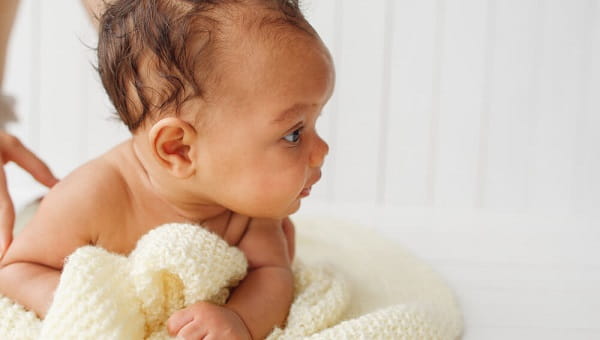We all need exercise, but it can be hard sometimes to get kids away from their screens long enough to remember how much fun it is to actually play. Here’s a look at how much exercise children really need, along with some ideas for fun ways to exercise.
Little kids
Smaller children up to age 5 don’t usually need to be told to exercise—they naturally want to use all that energy for play. The American Academy of Pediatrics recommends that little kids accumulate at least 60 minutes (and up to several hours) of active play throughout the day, which often comes in short bursts of activity. About a half-hour of structured activity will also help your child work on important skills such as jumping, kicking and throwing a ball. To encourage safe, active play:
- Provide plenty of age-appropriate toys like balls, building blocks or a sandbox
- Spend time with your child outside to encourage exploration
- Take your child to the playground
- Involve your child, when possible, with your daily activities around the house
Big kids
Children ages 6 to 17 should get at least 60 minutes of exercise every day, with most of that being of the “vigorous” variety. But that doesn’t mean they need formal, structured exercise like an adult. Kids can easily work out all the major muscle groups, along with their hearts and lungs, through play.
In the backyard
It doesn’t take any special equipment to play outside (although a backyard swimming pool is a bonus!). Try:
- Hopping or skipping
- Jumping rope
- Running
- Climbing trees
- Playing tag
- Swimming
- Hunting for rocks, bugs, pretty leaves or flowers
At the playground
If you can get away from home, a trip to the playground is almost guaranteed to keep your child active, through:
- Climbing on playground equipment
- Swinging
- Monkey bars
- Playing a pick-up game of basketball or soccer
With the family
There’s no better way to encourage a healthy lifestyle than by modeling the behavior—and joining in on the fun! Some good family activities include:
- Hiking
- Skateboarding
- Riding bikes
- Walking the dog
- Playing games like hide-and-seek or tug-of-war
- Going to the beach (swimming and playing—not just lying there!)
Organized sports
If you have the time and budget, organized sports can be great ways to help your child develop socially, as well as physically. There are lots of choices, such as:
- Dancing
- Gymnastics
- Team sports like baseball, soccer or volleyball
- Martial arts like tae kwon do or karate
- Rock climbing at the gym
- “Ninja” classes
Rainy days
Sure, they’re a bummer, but you don’t have to let them get you down! Try some fun, indoor games like:
- Turning on some music and hosting a dance party
- Turning on a video and learning some yoga positions or dance moves together
- If you have a hallway or a room without breakables, putting down masking tape “goals” on the floor, grabbing a ball, and having an indoor soccer game (or even hockey, using brooms and a smaller ball)
- Teaching your child to walk on their hands and feet, belly up, and having crab races through the kitchen




